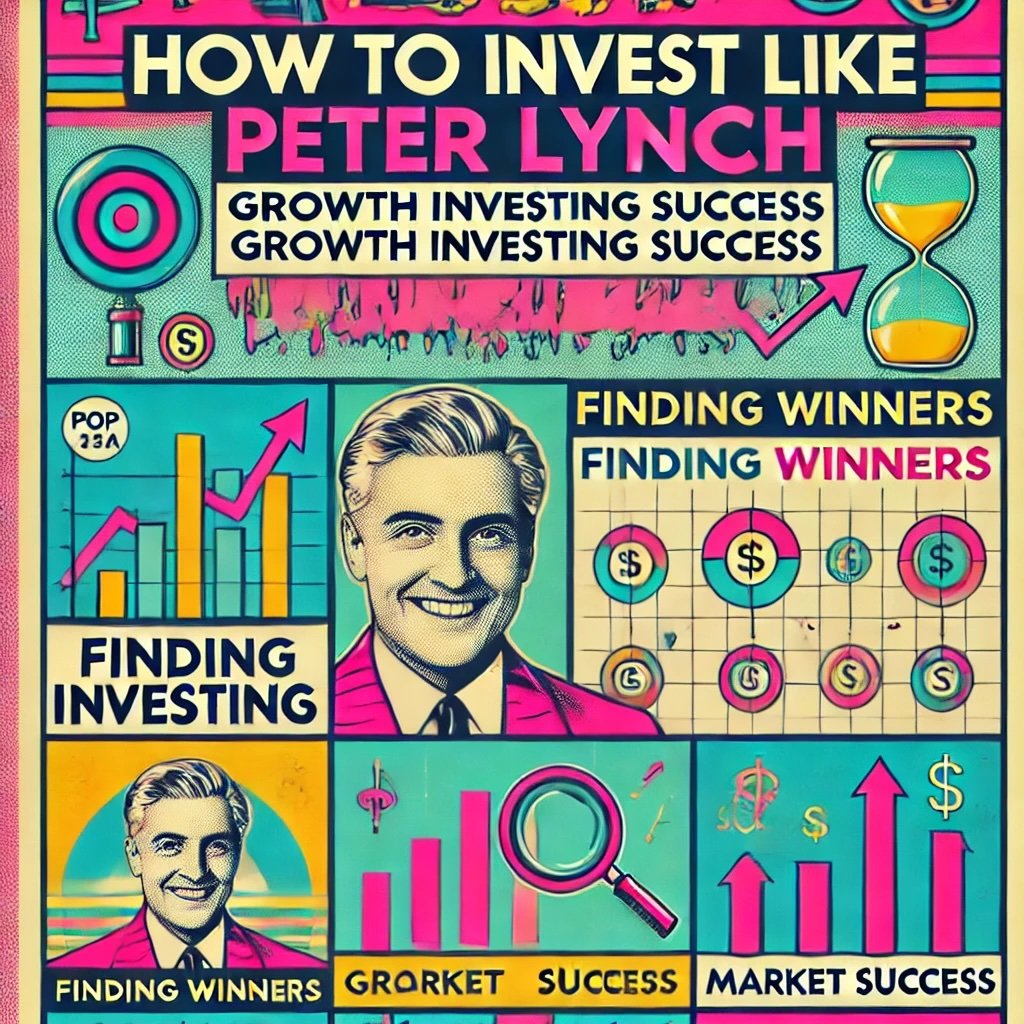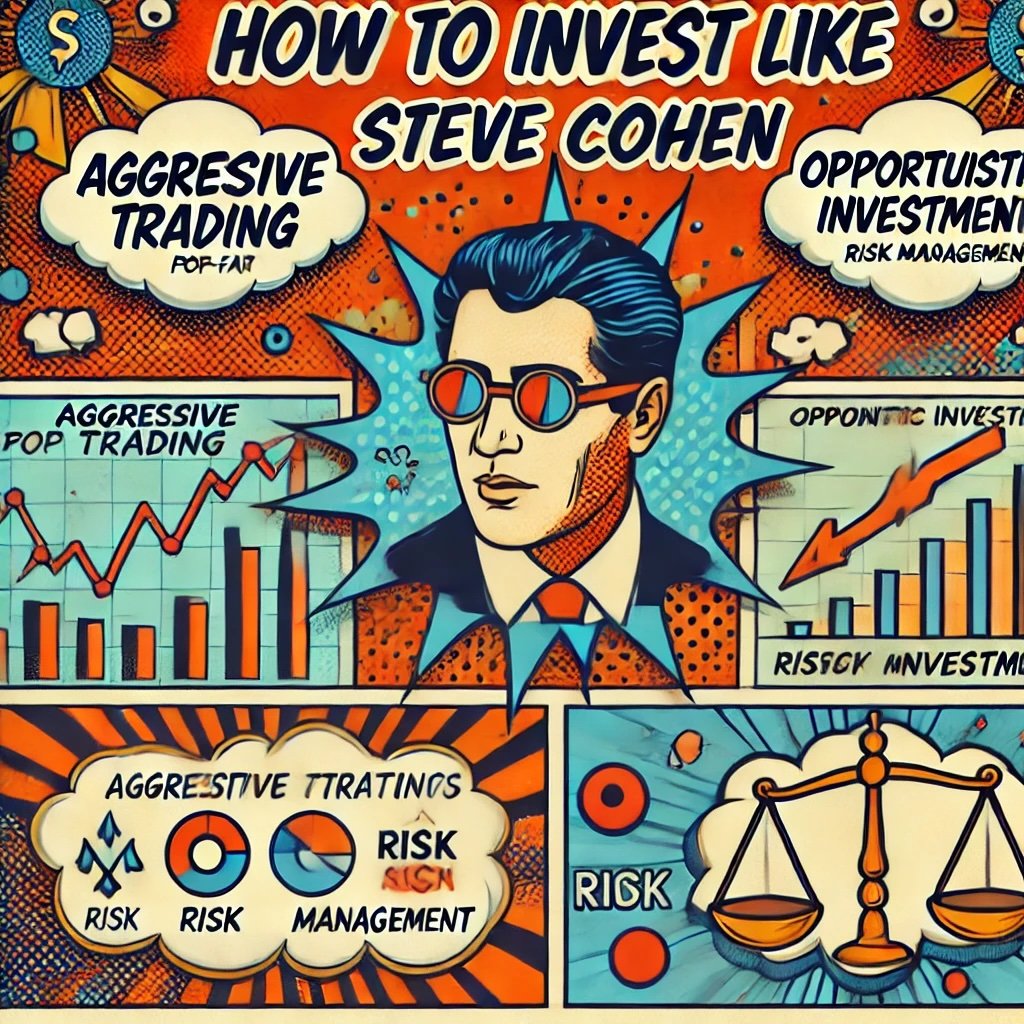In the fast-paced world of trading, maintaining control over your investments is crucial. That’s where stop-limit orders come into play. But what exactly are they? A stop-limit order is a sophisticated trading tool that combines the features of a stop order and a limit order. Here’s how it works:
- Stop Price: This is the price that triggers the order. When the stock hits this price, your order becomes active.
- Limit Price: This is the minimum price you’re willing to accept for your order. The trade will only execute at this price or better.
By setting both a stop price and a limit price, you gain more control over your trades. It’s like having a safety net with an added layer of precision, ensuring that you don’t sell too low or buy too high.
source: Charles Schwab on YouTube
Overview of Stop-Limit Orders
Why focus on stop-limit orders? The stock market is notoriously unpredictable. Protecting your investments should always be a top priority, and stop-limit orders can play a key role in this. The goal of this article is to demystify stop-limit orders, showing you how to use them effectively to safeguard your portfolio.

We’ll cover the following:
- Understanding the Basics: What stop-limit orders are and how they work.
- Practical Benefits: How these orders can protect your investments.
- When to Use Them: Ideal scenarios for implementing stop-limit orders.
- Step-by-Step Guide: How to set up and adjust stop-limit orders.
Understanding how to leverage stop-limit orders can give you a significant edge.
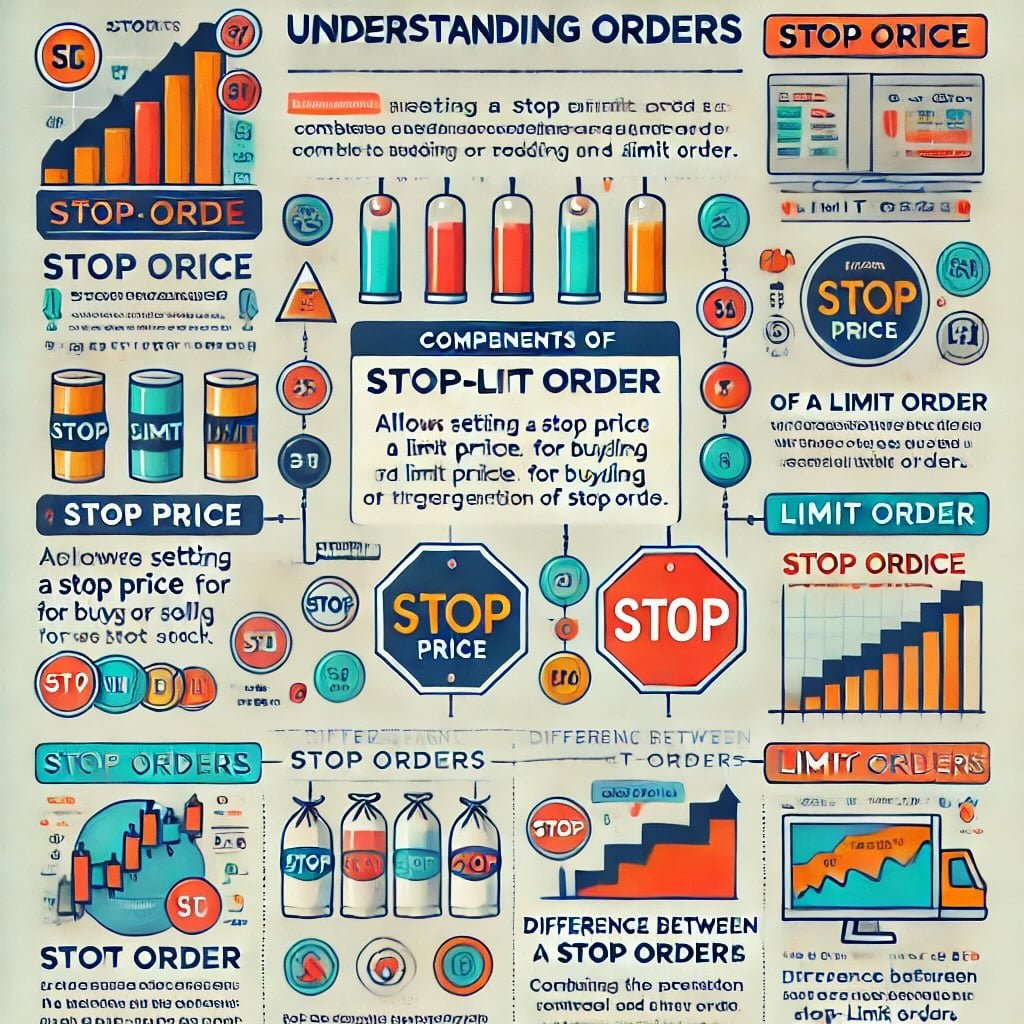
Understanding Stop-Limit Orders
Definition of Stop-Limit Orders
A stop-limit order is a powerful tool in the trading toolkit. It allows you to set a stop price and a limit price for buying or selling a stock. When the stop price is reached, the order becomes a limit order to buy or sell at the specified limit price or better. This means you get the precision of a limit order combined with the triggering mechanism of a stop order. It’s a way to protect your investments while still having control over the execution price.
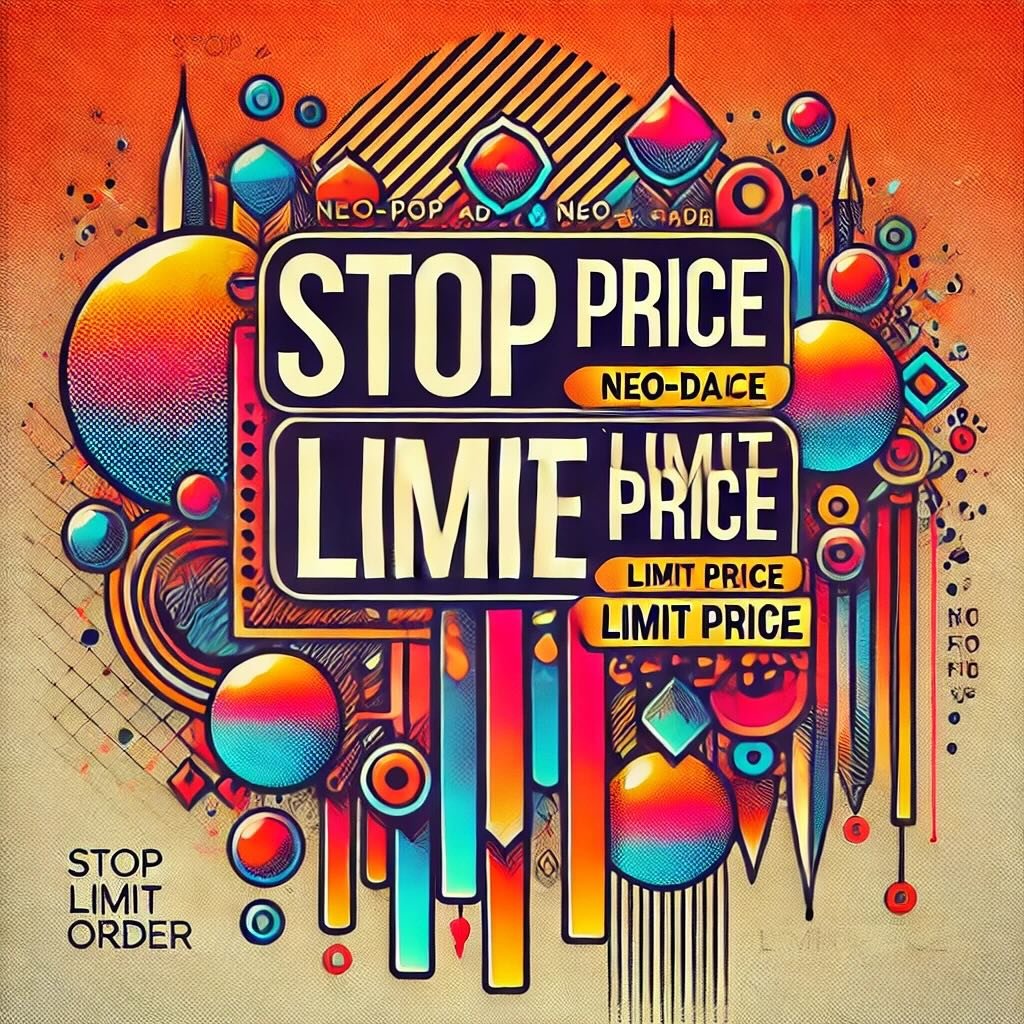
Components of a Stop-Limit Order
A stop-limit order consists of two critical components:
- Stop Price: This is the price that triggers the limit order. Think of it as the alert that tells the market you’re ready to make a move. For example, if you own a stock trading at $50 and you set a stop price at $45, the order will activate if the stock price drops to $45.
- Limit Price: This is the price at which the order will execute, once triggered by the stop price. It ensures that the order won’t be filled at a less favorable price. Continuing with the previous example, if you set a limit price of $44, the order will only execute if the stock can be sold at $44 or better.
These two prices work in tandem to give you control and protection. The stop price triggers the order, and the limit price sets the boundary for the trade execution.
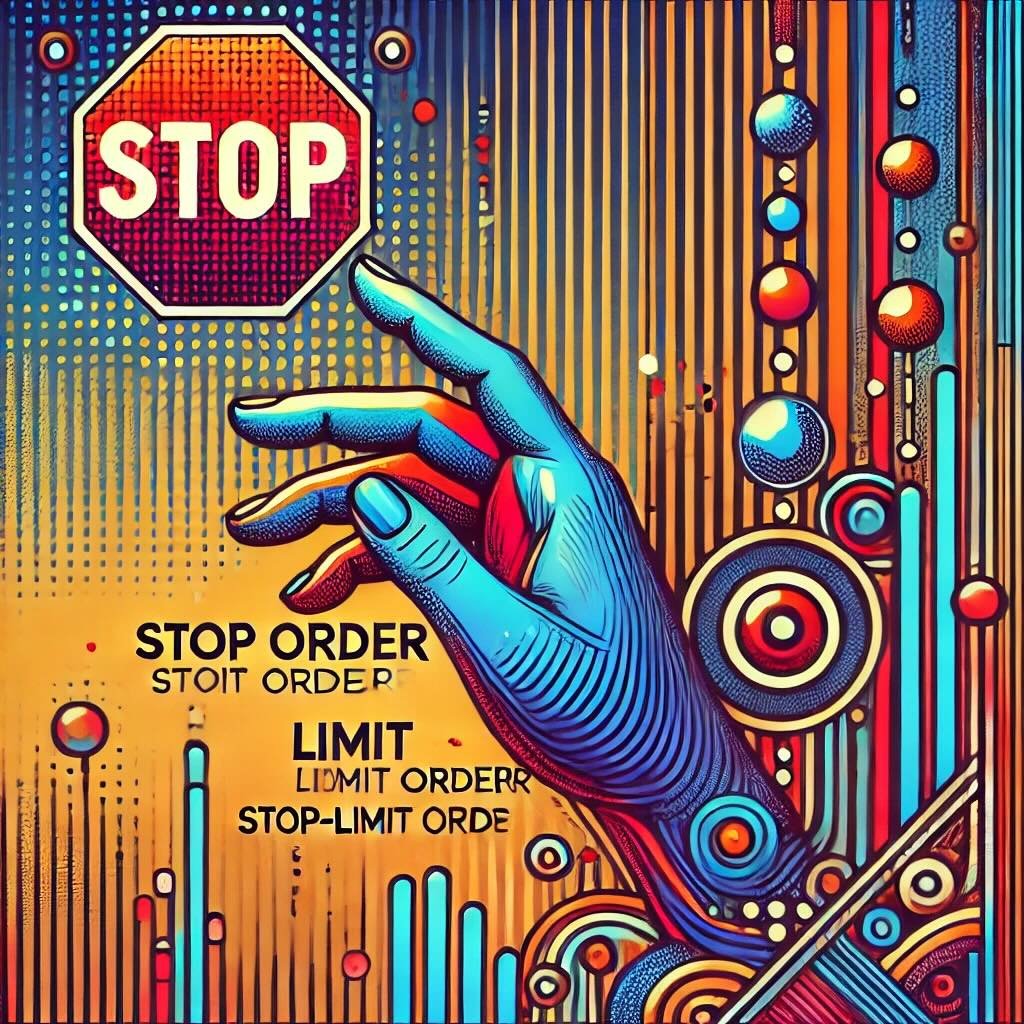
Difference Between Stop Orders and Limit Orders
It’s easy to confuse stop-limit orders with stop orders and limit orders, but they serve different purposes:
- Stop Orders: A stop order (or stop-loss order) triggers a market order when the stop price is reached. This means the trade will execute at the best available price, which can be significantly different from the stop price, especially in volatile markets. It’s primarily used to prevent further losses.
- Limit Orders: A limit order specifies the maximum or minimum price at which you are willing to buy or sell a stock. The order will only execute at this price or better. However, it won’t trigger automatically; it’s always active until filled or canceled.
- Stop-Limit Orders: Combining the features of both, a stop-limit order triggers a limit order when the stop price is hit. This ensures that the trade will execute only at the specified limit price or better, providing more control over the trade execution.
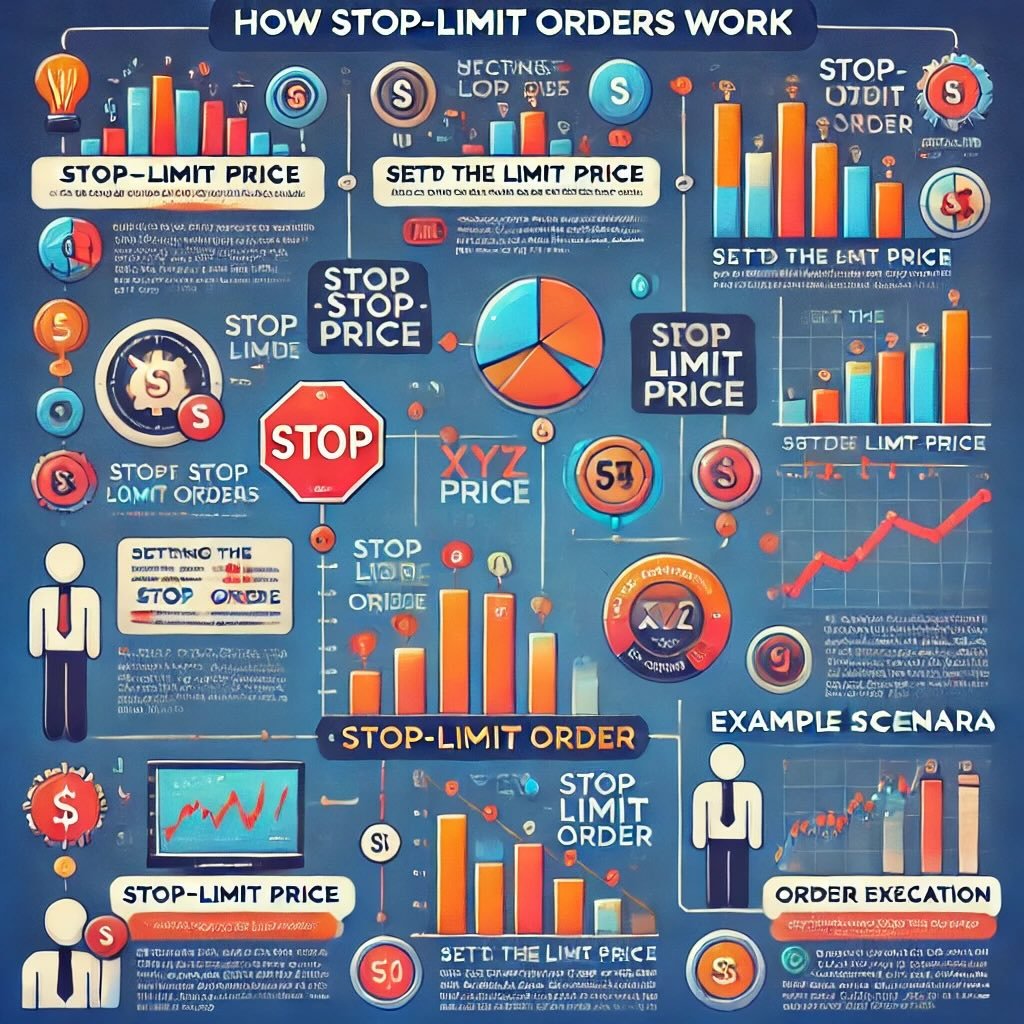
How Stop-Limit Orders Work
Mechanics of Stop-Limit Orders
Understanding how stop-limit orders work is essential for any trader looking to protect their investments with precision. Here’s a step-by-step breakdown of the mechanics:
- Set the Stop Price: First, you decide on the stop price. This is the price that triggers your order to buy or sell. It’s like setting an alarm that goes off when the market hits your specified level.
- Set the Limit Price: Next, you set the limit price. This is the minimum price you’re willing to accept (for a sell order) or the maximum price you’re willing to pay (for a buy order). It ensures your order won’t be executed at a less favorable price.
- Order Activation: When the stock hits the stop price, your stop-limit order is activated. At this point, it becomes a limit order.
- Order Execution: The limit order will only execute if the stock can be bought or sold at the limit price or better. If the market moves too quickly and the limit price isn’t met, the order won’t execute.
This combination allows you to have control over the price while also having a trigger mechanism to automate your trades. It’s particularly useful in volatile markets where prices can swing wildly.
Example Scenario
Let’s bring this to life with a detailed example.
Imagine you own shares of XYZ Corp, currently trading at $50. You’re concerned about potential market volatility and want to protect your gains without selling immediately. Here’s how you might set up a stop-limit order:
- Setting the Stop Price: You decide to set a stop price at $45. This means if XYZ’s price drops to $45, your stop-limit order will be triggered.
- Setting the Limit Price: You set a limit price at $44. This ensures that if your order is triggered, it won’t be executed below $44, protecting you from selling at an undesirably low price.
- Triggering the Order: A few days later, news breaks that negatively impacts XYZ Corp. The stock price starts to fall and hits your stop price of $45. Your stop-limit order is now active and becomes a limit order to sell at $44.
- Order Execution: As the price continues to fall, it reaches $44. Since your limit price is met, your shares are sold at $44. If the price had fallen too quickly and never reached $44, your order wouldn’t have executed, leaving you with your shares.
This scenario shows the precision and control a stop-limit order provides. It helps you avoid selling too low during a sharp decline, giving you a buffer against rapid market movements.
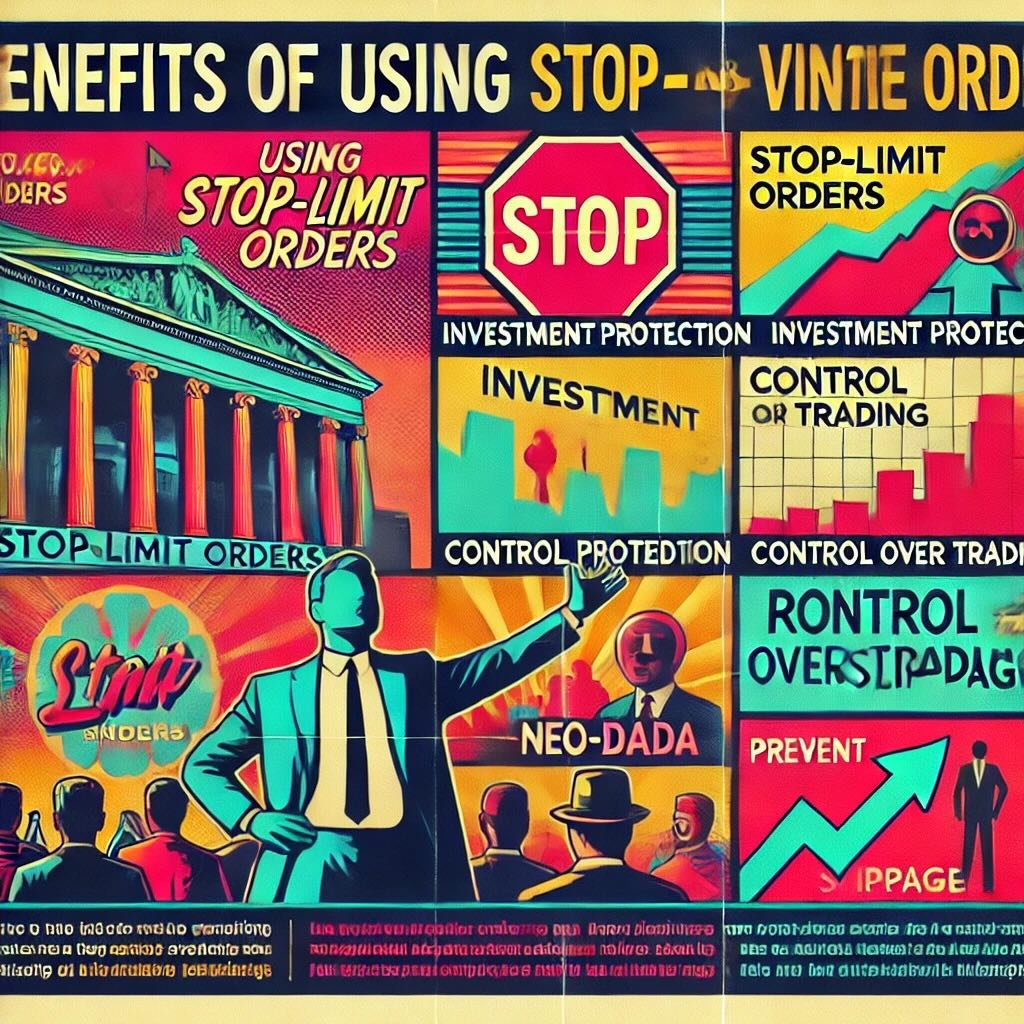
Benefits of Using Stop-Limit Orders
Investment Protection
Stop-limit orders are your financial safety net. They help protect your investments by allowing you to set predetermined prices for buying or selling stocks. This way, you can shield your portfolio from unexpected market swings. For instance, if you hold a stock that’s been performing well but you’re worried about a sudden downturn, setting a stop-limit order ensures that you can lock in gains before the price plummets. It’s like having a built-in guardrail that prevents your investments from free-falling. You decide the minimum price you’re willing to accept, providing a layer of security against market volatility.
Control Over Trading
With stop-limit orders, you’re in the driver’s seat. Unlike market orders that execute at the best available price, stop-limit orders give you precise control over your trades. You dictate the exact price range within which you want your order to be executed. This control is invaluable, especially in a fast-moving market where prices can change in the blink of an eye. By setting both a stop and a limit price, you ensure that your trades align with your strategy and risk tolerance. No more surprises or unwanted executions at unfavorable prices. It’s your money, and you get to decide how and when it’s traded.
Preventing Slippage
Slippage can be a trader’s worst nightmare. It occurs when there’s a significant difference between the expected price of a trade and the actual price at which it’s executed. This often happens in volatile markets where prices can move quickly. Stop-limit orders are designed to prevent slippage. By setting a limit price, you ensure that your trade will only execute at your specified price or better. This means you won’t end up selling your stock for much less than you anticipated or buying it for much more. It’s about ensuring predictability and precision in your trading activities.
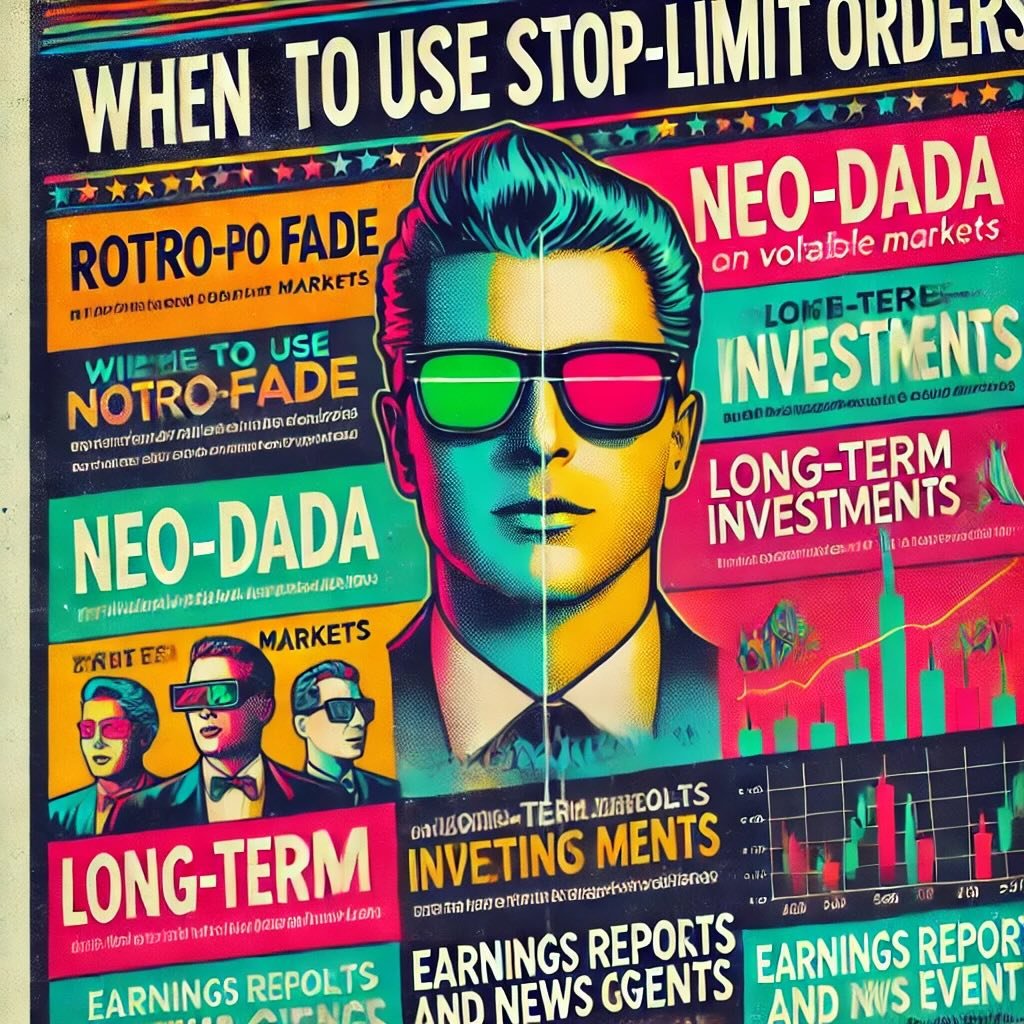
When to Use Stop-Limit Orders
Volatile Markets
Volatile markets can feel like a roller coaster ride, with prices swinging wildly in short periods. This unpredictability can be nerve-wracking, but it’s also where stop-limit orders shine. By setting a stop-limit order, you protect your investments from drastic drops while still participating in the market. For instance, during periods of high volatility, you can set a stop price close to the current market price and a limit price slightly lower. If the market dips, your order is triggered, and you sell at a price that’s acceptable to you. This strategy helps you avoid the panic selling that often occurs in volatile markets, keeping your trading decisions rational and controlled.
Long-Term Investments
Long-term investments are all about patience and strategy. But that doesn’t mean you should ignore protective measures. Stop-limit orders can be a great addition to your long-term investment toolkit. They allow you to set automatic sell orders at strategic points, ensuring you lock in profits or cut losses without having to constantly monitor the market. For example, if you have a long-term position in a stock that has appreciated significantly, setting a stop-limit order can protect your gains. This way, if the market turns and the stock starts to fall, your stop-limit order will sell the stock, securing your profits and preventing significant losses.
Earnings Reports and News Events
Earnings reports and significant news events can cause sudden and sharp movements in stock prices. These events are often unpredictable and can lead to both opportunities and risks. Stop-limit orders are particularly useful in these situations. Before an earnings report, you can set a stop-limit order to sell your shares if the price drops significantly, protecting you from potential negative surprises. Conversely, if you anticipate positive news, you can use a stop-limit order to buy shares, ensuring you don’t pay more than a specific price. This approach helps you navigate the uncertainty surrounding earnings reports and news events, managing risk while positioning yourself to take advantage of potential opportunities.
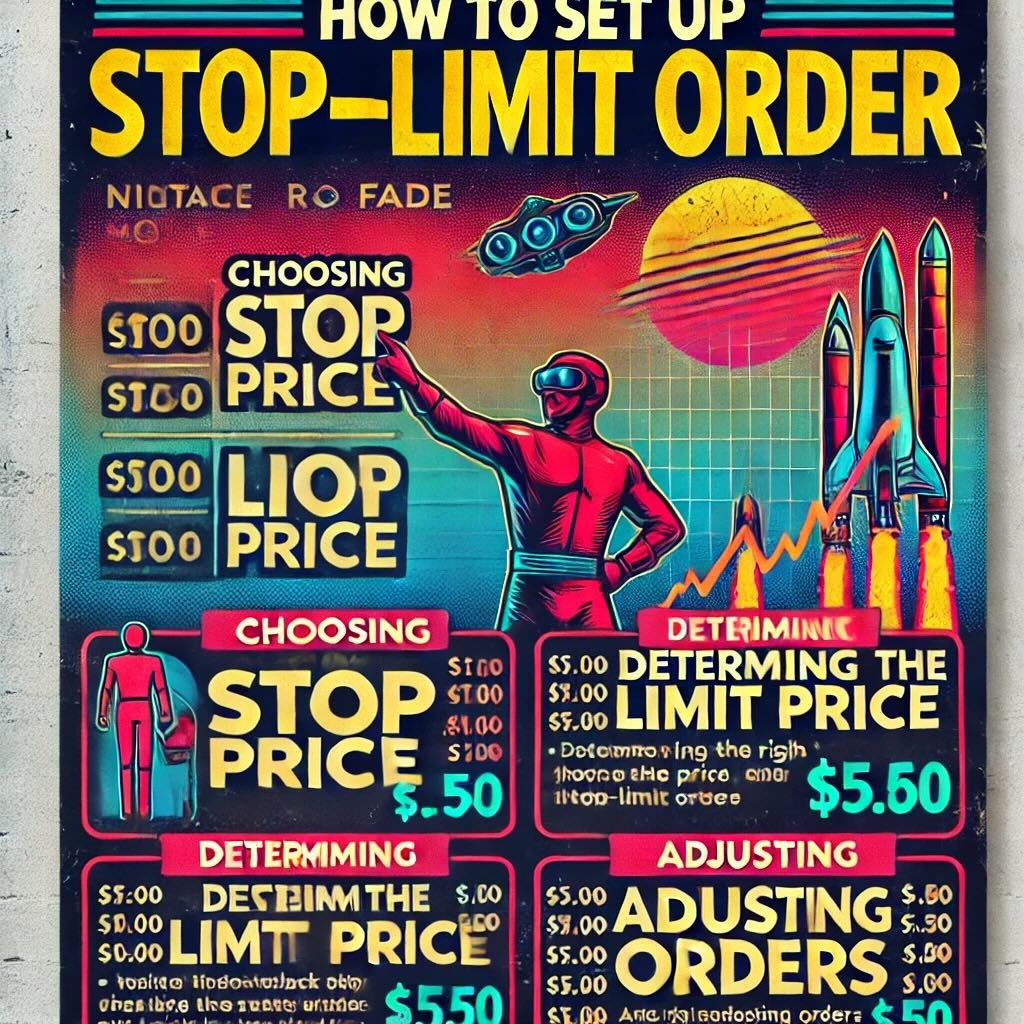
Setting Up a Stop-Limit Order
Choosing the Right Stop Price
Selecting the right stop price is crucial. This is the price that triggers your order, so it’s essential to strike a balance between protection and market flexibility. Here are some key points to consider:
- Avoiding Premature Triggers: If you set the stop price too close to the current market price, you risk triggering the order on a minor fluctuation, potentially selling your stock unnecessarily.
- Balancing Risk and Flexibility: On the other hand, setting it too far away might expose you to more significant losses.
- Considering Volatility: If a stock typically swings 2-3% in a day, setting your stop price within this range could lead to a premature sell. Instead, look at broader trends and set your stop price slightly below key support levels to avoid getting caught in the market’s daily noise.
Determining the Limit Price
Once you’ve decided on your stop price, it’s time to set the limit price. This is the minimum price you’re willing to accept for your stock (or the maximum price you’re willing to pay if you’re buying). Here’s how to approach it:
- Creating a Buffer: A good strategy is to set the limit price slightly below the stop price if you’re selling. This creates a buffer, allowing the order to execute even if the price dips slightly below the stop price before stabilizing.
- Balancing Execution and Protection: The goal is to strike a balance—set it too close to the stop price, and your order might not fill; too far, and you risk selling at a less favorable price.
Adjusting Orders
The market is dynamic, and so should be your approach to stop-limit orders. As market conditions change, adjusting your stop and limit prices is essential. Consider the following:
- Locking in Gains: If the stock you’re holding has moved up significantly, it might be wise to raise your stop price to lock in more gains.
- Adapting to Volatility: If market conditions become more volatile, you may want to widen the gap between your stop and limit prices to avoid premature execution.
- Regular Review: Regularly reviewing your orders ensures they align with your investment goals and the current market environment. Don’t set it and forget it—keep an eye on your orders and adjust as needed to stay in control.
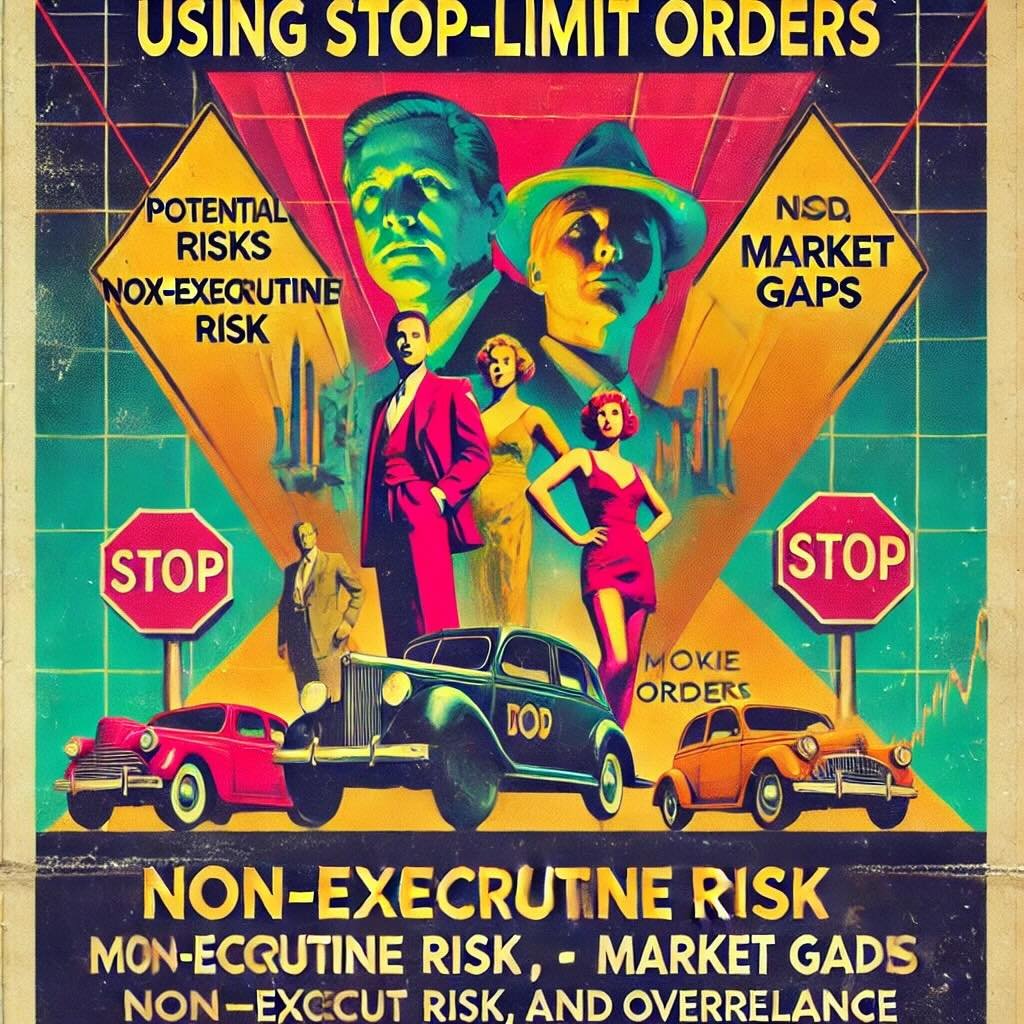
Potential Risks and Limitations
Non-Execution Risk
One of the main risks of using a stop-limit order is non-execution. Here’s the scenario: you’ve set your stop price and limit price, and you’re confident that your trade is protected. But what if the market never reaches your limit price? In that case, your order won’t be executed. This can be particularly frustrating in fast-moving markets where prices can skip over your limit price, leaving your order unfilled. Imagine you set a stop price at $50 and a limit price at $49. If the stock drops directly from $51 to $48 without touching $49, your order won’t execute, potentially leaving you with a larger loss than anticipated.
Market Gaps
Market gaps are another challenge when dealing with stop-limit orders. A market gap occurs when a stock’s price jumps from one level to another, bypassing the prices in between. This often happens when the market opens after a significant news event or earnings report. For example, if a stock closes at $100 and opens the next day at $90 due to a negative earnings report, your stop-limit order set at $95 may not execute if the price skips over your limit price entirely.
To mitigate this risk, consider setting a wider gap between your stop price and limit price to increase the chances of execution during volatile times. Another strategy is to use a stop order instead of a stop-limit order in cases where getting out of a position is more critical than the price at which you sell.
Overreliance
While stop-limit orders are powerful tools, relying on them too heavily can be a mistake. These orders are just one piece of the investment puzzle. Overreliance on stop-limit orders can lead to a false sense of security, causing you to neglect other important aspects of your investment strategy. It’s essential to remember that no single tool can protect against all market risks.
Diversification remains key. A well-rounded investment strategy should include a mix of assets, regular portfolio reviews, and an understanding of broader market conditions. Stop-limit orders are best used as part of a comprehensive risk management strategy, not as a standalone solution.
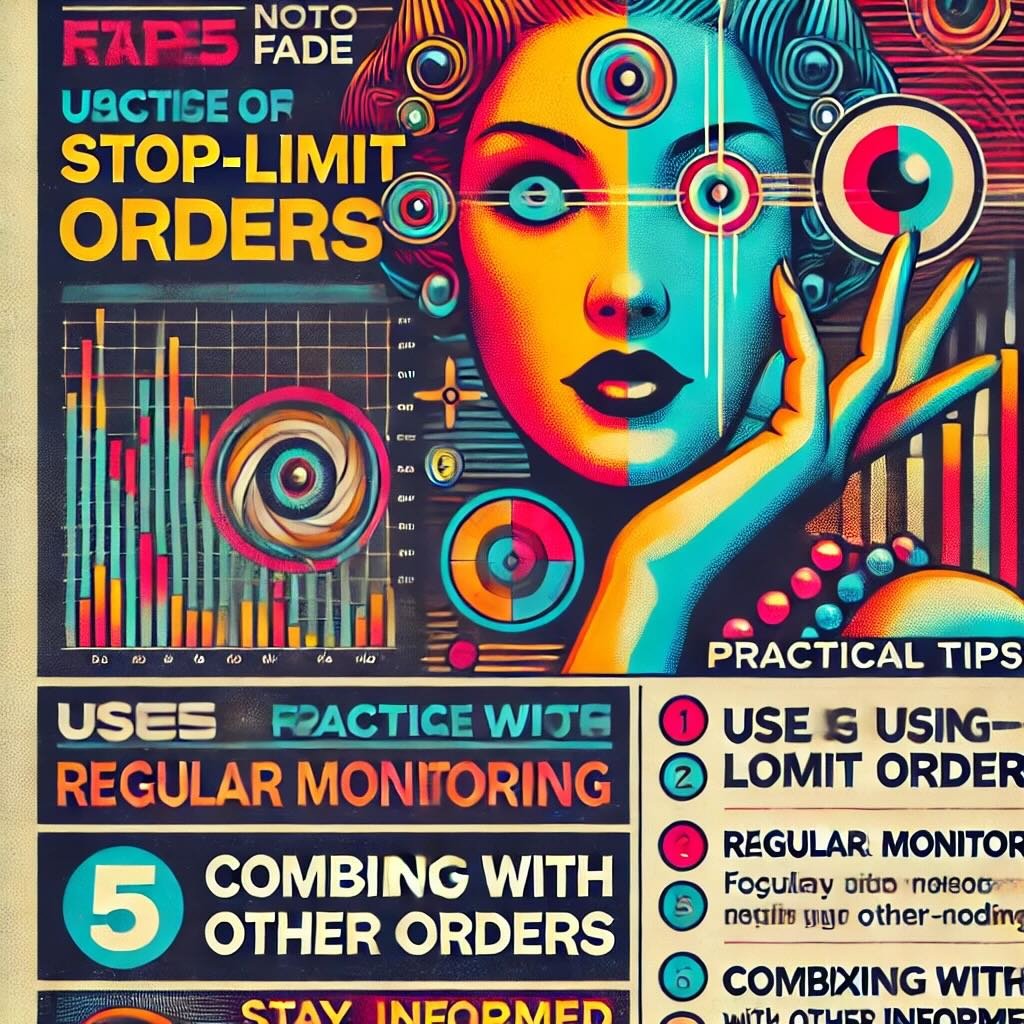
Practical Tips for Using Stop-Limit Orders
Regular Monitoring
Set it and forget it? Not with stop-limit orders. These orders require regular attention to ensure they remain aligned with your investment goals and market conditions. The stock market is anything but static; prices fluctuate, trends shift, and what made sense yesterday might not make sense today. By regularly monitoring your stop-limit orders, you can adjust them as needed to reflect changes in your portfolio or market environment. For example, if a stock has moved up significantly since you set the order, you might want to raise your stop price to lock in more profits. On the flip side, if the stock has dropped, you may need to reconsider your limit price. Think of it as tending a garden—regular upkeep keeps everything in order and growing.
Combining with Other Orders
Why rely on just one tool when you can have a full toolbox? Stop-limit orders are powerful, but they become even more effective when combined with other types of orders. For instance, you can pair a stop-limit order with a trailing stop order. The trailing stop moves with the stock price, helping you capture gains while still offering protection against downturns. Or, consider using a bracket order, which places both a stop-limit order and a take-profit order at the same time. This way, you’re covered on both ends—if the price drops, your stop-limit order triggers, and if it rises, your take-profit order secures your gains. By mixing and matching different order types, you can create a more comprehensive risk management strategy that suits your specific needs.
Staying Informed
Knowledge is power, especially in the stock market. Staying informed about market conditions, company news, and economic events is crucial when using stop-limit orders. These factors can influence stock prices and trigger your orders, sometimes unexpectedly. For example, if an earnings report is coming up or there’s significant news about a company you’re invested in, you might want to adjust your stop and limit prices accordingly. Keeping an eye on broader market trends is equally important. Is the market in a bull run, or are we seeing signs of a correction? Such insights can help you fine-tune your stop-limit orders, ensuring they align with the current market environment. The more informed you are, the better equipped you’ll be to make smart adjustments to your trading strategy.
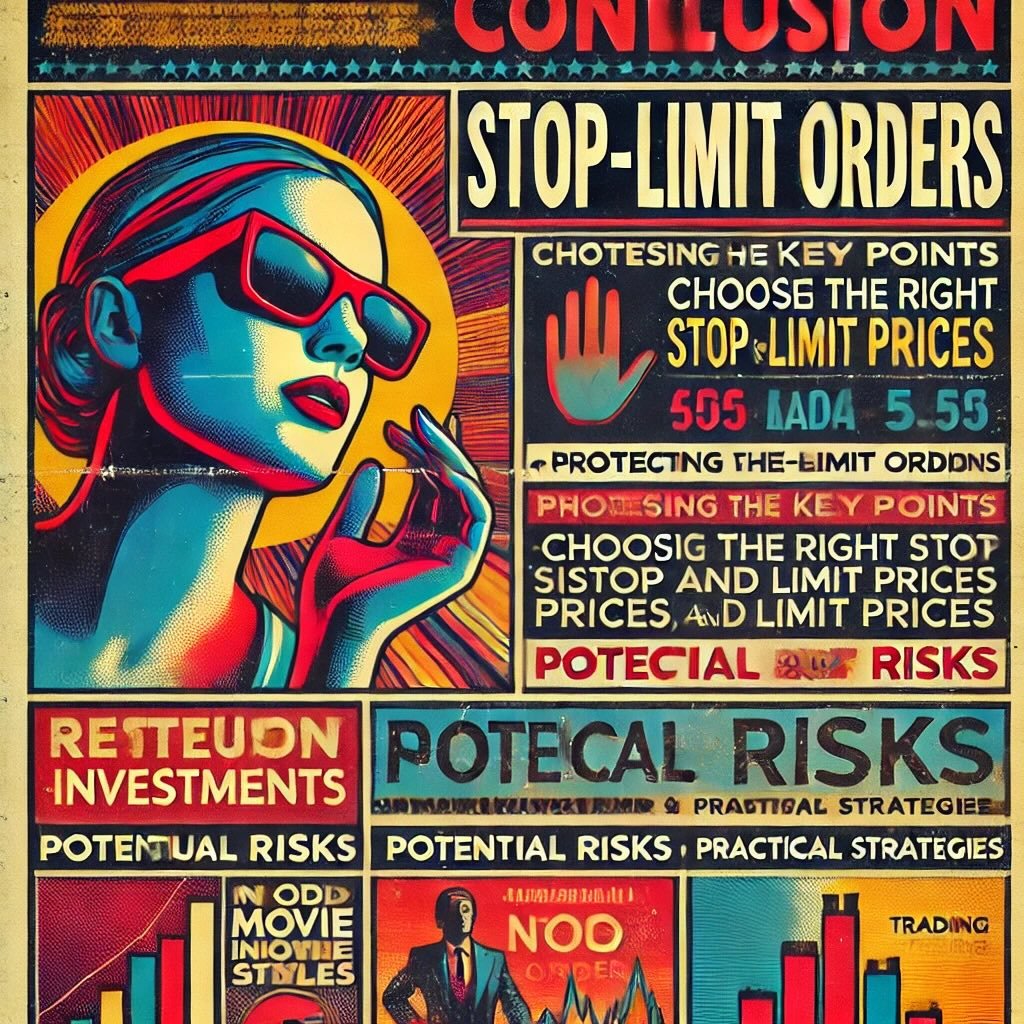
12-Question FAQ: What is a Stop-Limit Order & When to Use It for Investment Protection?
1) What exactly is a stop-limit order?
A stop-limit order combines a stop price (which activates your order) and a limit price (the worst price you’ll accept). When the stop is hit, your order becomes a limit order that fills only at the limit price or better.
2) How is it different from stop-loss and limit orders?
Stop-loss (stop-market): triggers a market order at the stop price—execution is likely, price is uncertain.
Limit: executes only at your limit price or better—price is controlled, timing isn’t.
Stop-limit: uses a stop to trigger a limit order—adds control but risks no fill.
3) When should I consider using a stop-limit order?
To protect gains without selling immediately.
Around volatile periods (earnings, major news) where you want price control.
In thin/illiquid names where market orders may slip badly.
4) What’s the key trade-off versus a stop-loss?
Stop-limit reduces slippage risk but introduces non-execution risk (your order may not fill if price gaps through the limit). Stop-loss prioritizes getting out, price be damned.
5) How do I choose the stop price?
Use a level that breaks your thesis, not random points: prior support, moving average, ATR (e.g., 1.5–2× ATR below price for sells), or % from entry. Avoid stops inside normal daily noise.
6) How do I set the limit price relative to the stop?
Create a small buffer so the order can fill during fast moves—common choices are 0.25–1.0% below the stop (for sell orders) or a fraction of ATR. Too tight = no fill; too wide = worse price.
7) Can I use stop-limit orders to enter positions?
Yes—buy stop-limit above price to enter on breakouts (stop = trigger, limit slightly above). It helps avoid chasing far above your trigger during fast moves.
8) What are the main risks and pitfalls?
Gaps: price jumps past your limit; order sits unfilled.
Illiquidity/halts: limited depth or trading pauses.
Over-tight settings: frequent, unwanted triggers with no fills.
Extended hours: wider spreads can trigger or block fills unexpectedly.
9) How do partial fills work?
Once triggered, the limit can fill in pieces at your limit or better. If size exceeds available liquidity at that price, you may get a partial and the remainder stays working until filled or expired.
10) What order settings matter (time-in-force, routing)?
DAY vs GTC: GTC persists (often 60–90 days broker max); DAY cancels at close.
RTH vs extended hours: choose whether it can trigger pre/post-market.
Routing: smart vs directed—affects fill quality in fast markets.
11) How should I adjust stops as price moves?
Trail beneath higher swing lows or use ATR-based trailing bands. For long-term holds, ratchet up only after new bases form to avoid whipsaws. Re-evaluate after earnings, news, or volatility shifts.
12) What are smart ways to combine stop-limits with other orders?
Bracket/OCO: profit-taking limit + protective stop-limit.
Trailing stop-limit: the stop trails; when hit it becomes a limit.
Pair with position sizing and diversification—orders manage entries/exits, not overall risk.
Educational content only—this is not investment advice.
Conclusion
Stop-limit orders offer a way to protect your investments by setting predetermined prices for buying or selling, giving you greater control over your trades. We discussed the mechanics of these orders, highlighting the importance of choosing the right stop and limit prices. We also touched on potential risks, like non-execution and market gaps, and how to mitigate them. Finally, we explored practical strategies for monitoring, combining with other orders, and staying informed to maximize the effectiveness of stop-limit orders.
Encouragement to Practice
Understanding the theory is one thing, but real mastery comes with practice. Don’t just take this information at face value—put it into action. Start by using a demo account to get comfortable with setting and adjusting stop-limit orders without risking real money. Once you’re confident, try placing small trades to see how these orders work in real market conditions. This hands-on experience will help you fine-tune your approach, making you more adept at using stop-limit orders to protect and grow your investments.
Final Thoughts
Stop-limit orders are a powerful tool in the investor’s arsenal, but they’re most effective when used as part of a broader, well-rounded investment strategy. They offer a level of protection and control that can be invaluable, especially in volatile markets. However, they’re not a one-size-fits-all solution. Combine them with other strategies, stay informed, and be ready to adapt as market conditions change. By integrating stop-limit orders into your overall trading plan, you can better navigate the ups and downs of the market, safeguarding your investments while positioning yourself for success.
Important Information
Comprehensive Investment Disclaimer:
All content provided on this website (including but not limited to portfolio ideas, fund analyses, investment strategies, commentary on market conditions, and discussions regarding leverage) is strictly for educational, informational, and illustrative purposes only. The information does not constitute financial, investment, tax, accounting, or legal advice. Opinions, strategies, and ideas presented herein represent personal perspectives, are based on independent research and publicly available information, and do not necessarily reflect the views or official positions of any third-party organizations, institutions, or affiliates.
Investing in financial markets inherently carries substantial risks, including but not limited to market volatility, economic uncertainties, geopolitical developments, and liquidity risks. You must be fully aware that there is always the potential for partial or total loss of your principal investment. Additionally, the use of leverage or leveraged financial products significantly increases risk exposure by amplifying both potential gains and potential losses, and thus is not appropriate or advisable for all investors. Using leverage may result in losing more than your initial invested capital, incurring margin calls, experiencing substantial interest costs, or suffering severe financial distress.
Past performance indicators, including historical data, backtesting results, and hypothetical scenarios, should never be viewed as guarantees or reliable predictions of future performance. Any examples provided are purely hypothetical and intended only for illustration purposes. Performance benchmarks, such as market indexes mentioned on this site, are theoretical and are not directly investable. While diligent efforts are made to provide accurate and current information, “Picture Perfect Portfolios” does not warrant, represent, or guarantee the accuracy, completeness, or timeliness of any information provided. Errors, inaccuracies, or outdated information may exist.
Users of this website are strongly encouraged to independently verify all information, conduct comprehensive research and due diligence, and engage with qualified financial, investment, tax, or legal professionals before making any investment or financial decisions. The responsibility for making informed investment decisions rests entirely with the individual. “Picture Perfect Portfolios” explicitly disclaims all liability for any direct, indirect, incidental, special, consequential, or other losses or damages incurred, financial or otherwise, arising out of reliance upon, or use of, any content or information presented on this website.
By accessing, reading, and utilizing the content on this website, you expressly acknowledge, understand, accept, and agree to abide by these terms and conditions. Please consult the full and detailed disclaimer available elsewhere on this website for further clarification and additional important disclosures. Read the complete disclaimer here.


